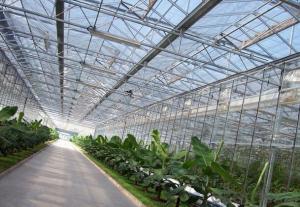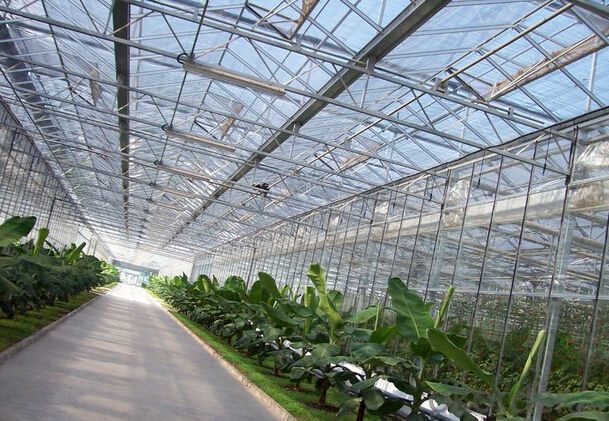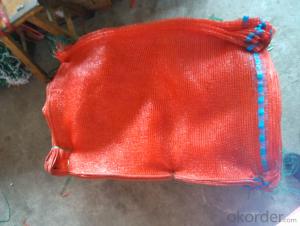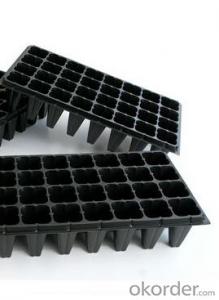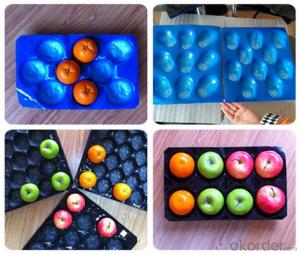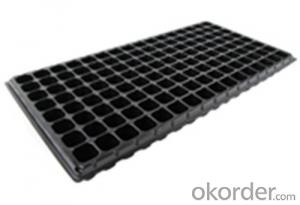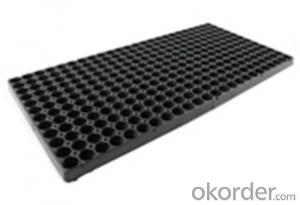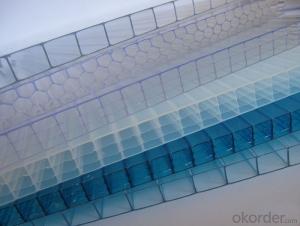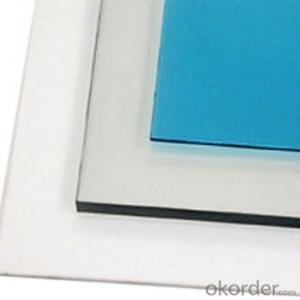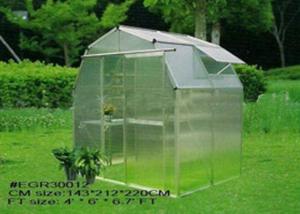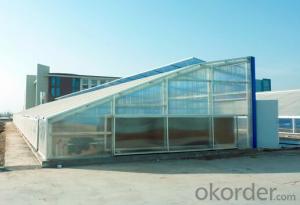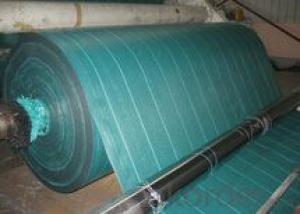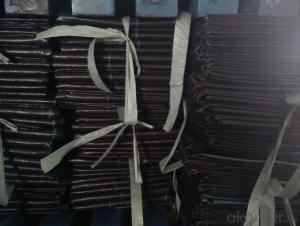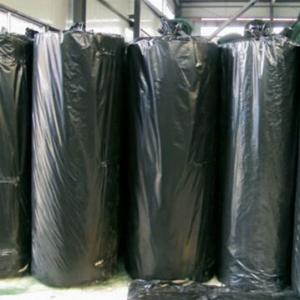Greenhouse roofs with plastic polycarbonate sheet
- Loading Port:
- Shanghai
- Payment Terms:
- TT OR LC
- Min Order Qty:
- 10 set
- Supply Capability:
- 1000 set/month
OKorder Service Pledge
OKorder Financial Service
You Might Also Like
Advantage:
Full range and customized of product
Ideal price-quality ratio
Satisfactory service from “A” to ”Z”
True quality guarantee
Product Parameter:
Polycarbonate greenhouse PC8000/9600Venlo
-Commercial Greenhouses - agricultural greenhouse for flower/vegetable
1.Feature:
Good heat retention, high intensity, easy assembly, energy saving, anti dew, strong impact resistance and long service life, etc.
2.Structural Characteristics:
Venlo structure or A shape structure
span: 8m/9.6M/12M, bay size: 3.2M/ 4M, section :4M/ 4.5M;
Gutter: 3-5.5M
The frame works structure is assembled by prefabricated parts. All main parts are hot dipping galvanized after processing with zinc cover 275G/M2 in order to avoid any rust;
Cover: 8mm polycarbonate panel, by special aluminum profiles together with sealed band
Ventilation: single roof vents or double roof vents, controlled by rack and pinion system
Aluminum sliding doors;
- Q: How does plastic mulch film contribute to soil temperature regulation?
- Plastic mulch film contributes to soil temperature regulation by acting as a barrier between the soil and the environment. It helps to trap heat from the sun, creating a warmer microclimate for the soil underneath. Additionally, it prevents heat loss through evaporation and insulation, maintaining a more stable temperature throughout the day and night. This regulated soil temperature promotes better plant growth, root development, and overall crop productivity.
- Q: Can nursery trays be used for air layering plants?
- Yes, nursery trays can be used for air layering plants. The trays provide a convenient and efficient way to hold the rooting medium and the air layering process can be successfully carried out in them.
- Q: i want to know about Plastic Injectionwhich i got from http://www.okorder so please help me.
- Hey JF, Plastic injection is used when you want to create an item from plastic in a certain shape, time after time. Lets say you want to create a red bucket. You create a mold for that bucket. You will melt the plastic with red color beads and pump (inject) it into that mold. you spray the mold with cold water and open it up and you have your bucket (after trimming off the excess). If you look at any bottle you have at home you'll probably see the seam running around the outside from the mold.
- Q: Can nursery trays be used for starting groundcover grasses?
- Yes, nursery trays can be used for starting groundcover grasses. Nursery trays provide a convenient and controlled environment for germinating and growing grass seeds. They offer proper drainage, aeration, and space for the young grass to develop strong root systems. Using nursery trays also allows for easy transplanting of the established grasses once they are ready for outdoor planting.
- Q: Because I heard some plastic types just release a bad gas and char...but I will be melting them with a heat gun if that makes any different...just blows hot air
- Although all plastic is fundamentally the same, plastic is made by adding different chemicals together to come up with a compound of those chemicals. The use of the plastic would determine which receipt of chemicals to use to obtain the attributes you want for the finished product. Short answer, you'd have to know what was the intended use of the plastic you want to melt, to know if would be appropriate for your needs.
- Q: Are nursery trays suitable for starting ground vegetables?
- Yes, nursery trays are suitable for starting ground vegetables. They provide a controlled environment for germination and seedling growth, allowing for easy transplanting into the ground once the seedlings are well-established.
- Q: How do you choose the right ground cover for a specific color palette or theme?
- When choosing the right ground cover for a specific color palette or theme, it is important to consider a few factors. Firstly, think about the overall color scheme or theme you want to achieve in your garden or landscape. This could be a specific color palette, such as shades of blue and purple, or a theme like a cottage garden or a tropical oasis. Next, research different types of ground cover plants that are available in the desired colors or that fit the chosen theme. Look for plants that have foliage or flowers in the specific colors you are aiming for. Consider their growth habits, maintenance requirements, and suitability for your specific climate and soil conditions. After narrowing down your options, visit a local nursery or garden center to see the plants in person and get a better idea of their colors and textures. It can also be helpful to consult with a knowledgeable staff member or horticulturist who can guide you in selecting the right ground cover plants for your color palette or theme. Lastly, consider the overall visual impact and balance of the chosen ground cover plants with the rest of your landscape. Think about their height, spread, and how they will complement other plants, hardscape elements, and features in your garden. By considering these factors, you can choose the right ground cover that enhances your desired color palette or theme and creates a visually appealing garden.
- Q: when different type of plastic are crush and mixed togerther is it possible to seperate them?
- To a certain degree, it can be possible. Suppose that the plastic is turned into small bits. Different type of plastic may have slight variation in their density, so you can put them in a water bath, containing a variable concentration of salt. With pure water, then lpastic with a density less than 1 would float, and the ones with higher density wold sink. Then you take the plastic that sank and put in in a btah with slightly salted water, thus with a density slightly higher than 1, say 1.05. Then plastics with a density lower than 1.05 would float, the the heavier would sink, and so on. To separate lighter plastic, you can use a bath of oil, as oil has a density lower than water. But it gets quite complicated quickly, and costly unless you can do it on a large scale, and the plastic may not always be totally pure in the end. So recycled plastic will be used in applications that do not need perfectly controlled composition.
- Q: Can agricultural plastic products be used for animal bedding?
- Yes, agricultural plastic products can be used for animal bedding. Agricultural plastic products such as plastic mulch film or silage bags can be repurposed as animal bedding, providing a cost-effective and durable option. However, it is essential to ensure that the plastic is clean and free from any contaminants that could harm the animals. Additionally, proper management practices should be followed to prevent any potential hazards associated with using agricultural plastic products for bedding.
- Q: Can ground cover be used as a natural mulch?
- Yes, ground cover can be used as a natural mulch. Ground cover plants such as clover, creeping thyme, or vinca minor can help suppress weed growth, retain moisture, and protect the soil from erosion. They act as a living mulch, providing similar benefits to traditional mulch while also adding beauty to the landscape.
Send your message to us
Greenhouse roofs with plastic polycarbonate sheet
- Loading Port:
- Shanghai
- Payment Terms:
- TT OR LC
- Min Order Qty:
- 10 set
- Supply Capability:
- 1000 set/month
OKorder Service Pledge
OKorder Financial Service
Similar products
Hot products
Hot Searches
Related keywords
